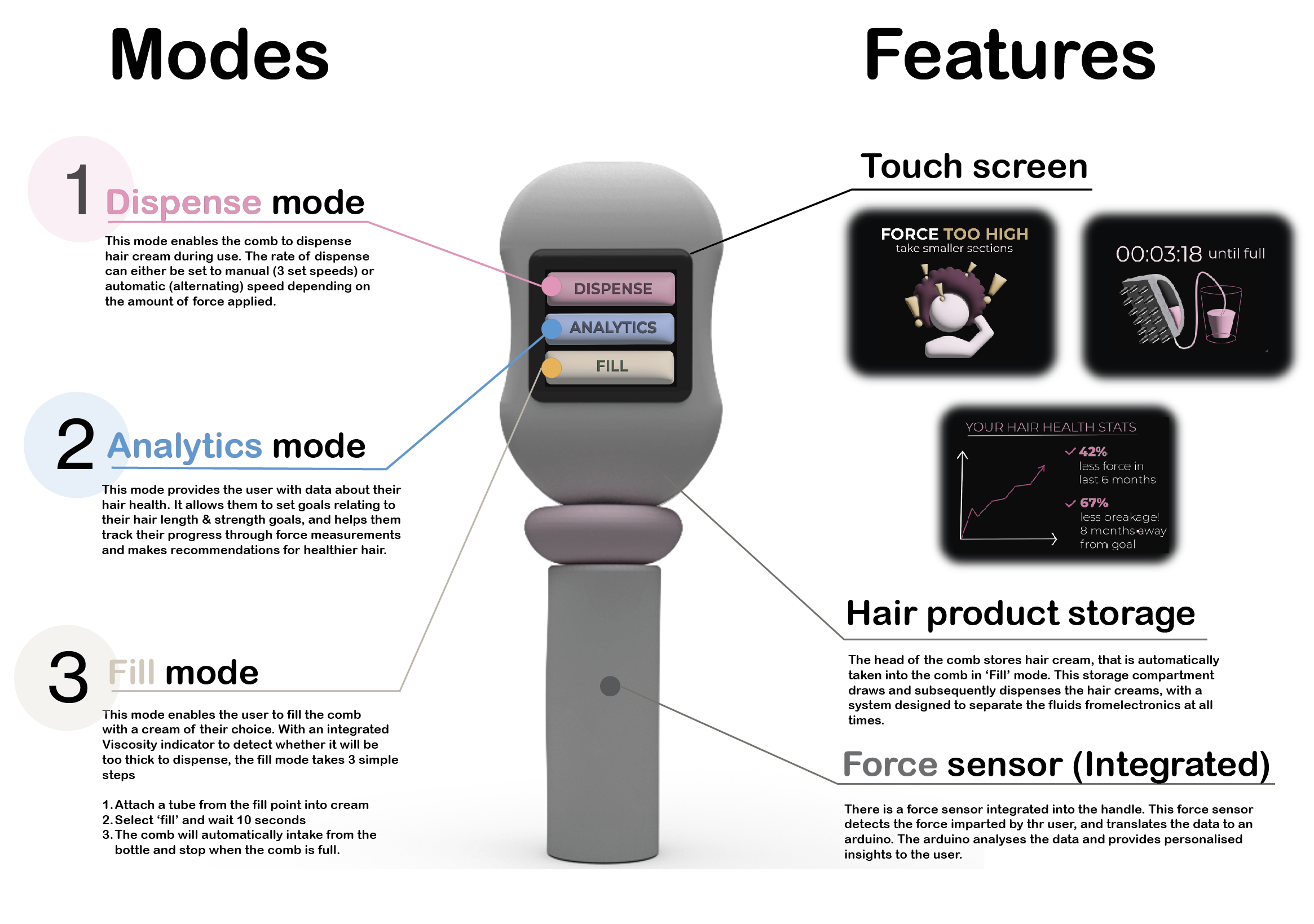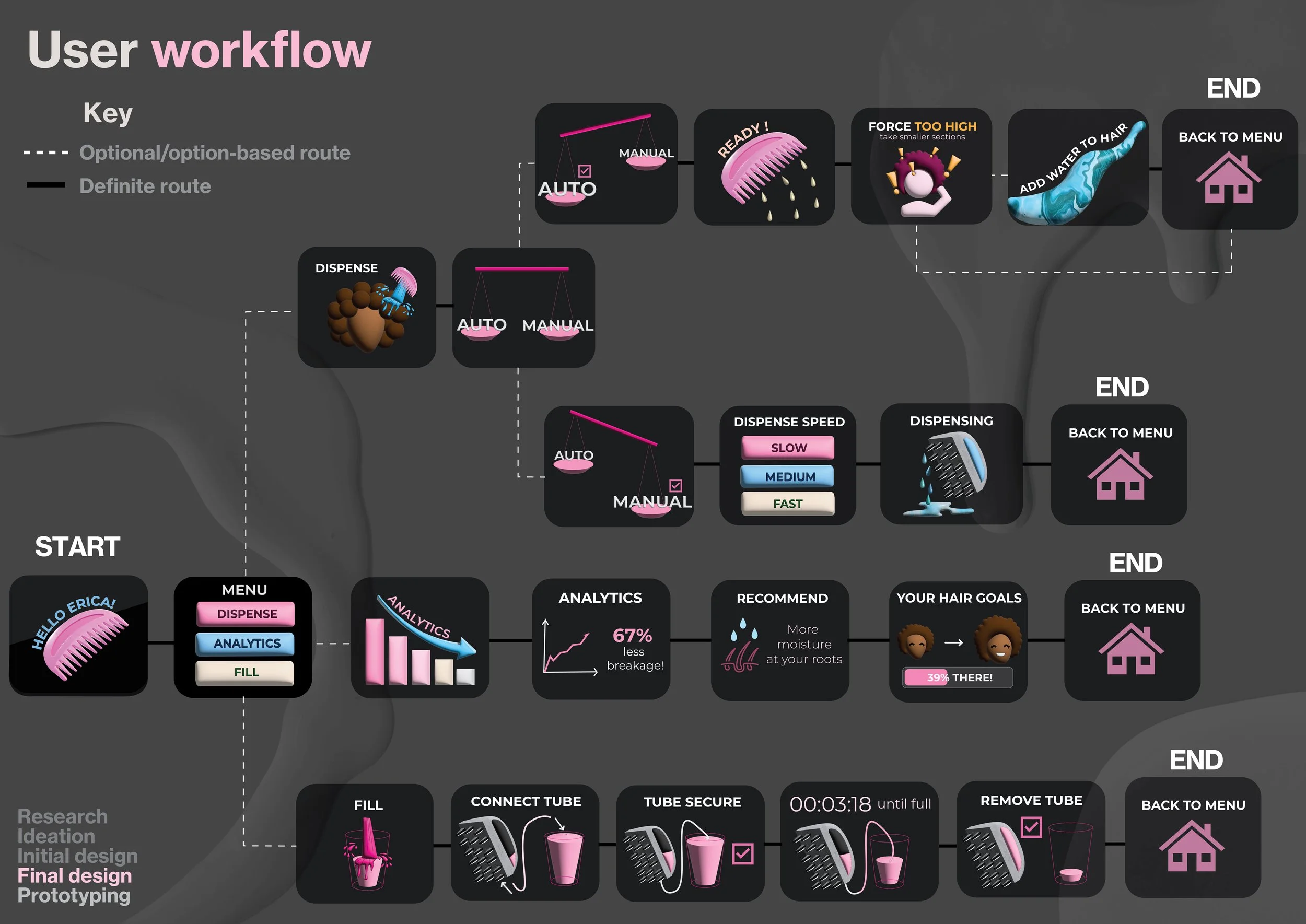
SMARTFro
Final Dissertation project (Grade: 82%, 1st Class Honours)
AWARDS
Winner of Loughborough University Initiate Fund
Finalist for the Loughborough Student Creator Award
Investment from Lboro Enterprise for development post university
96% of Black women struggle with hair breakage.
SMARTFro is an intelligent comb that monitors the combing force to dispense a corresponding amount of hair cream, and provides hair health tracking data to reduce breakage once & for all.
The Problem
Project inspiration
As a Black woman, I’ve struggled with hair breakage for YEARS. Afro hair has low water content, resulting in brittle hair strands that are prone to snapping during dry combing. I decided to see what I could do to reduce that.
The context
Project duration: 7 months
Design tools: Adobe Illustrator, Photoshop, Indesign, hand Sketches, Siemens NX 12 (CAD)
Prototyping tools: Rapid prototyping (3D printing), Workshop tools (saw, hand files etc)
The Outcome
Project outcomes:
A 120 participant survey data
A functional prototype
A display digital prototype
A user trial
So, how does it work?
Make it
The Prototyping journey
These are just a few moments captured during the manufacturing process (Warning: featuring motivational TikTok sound!)
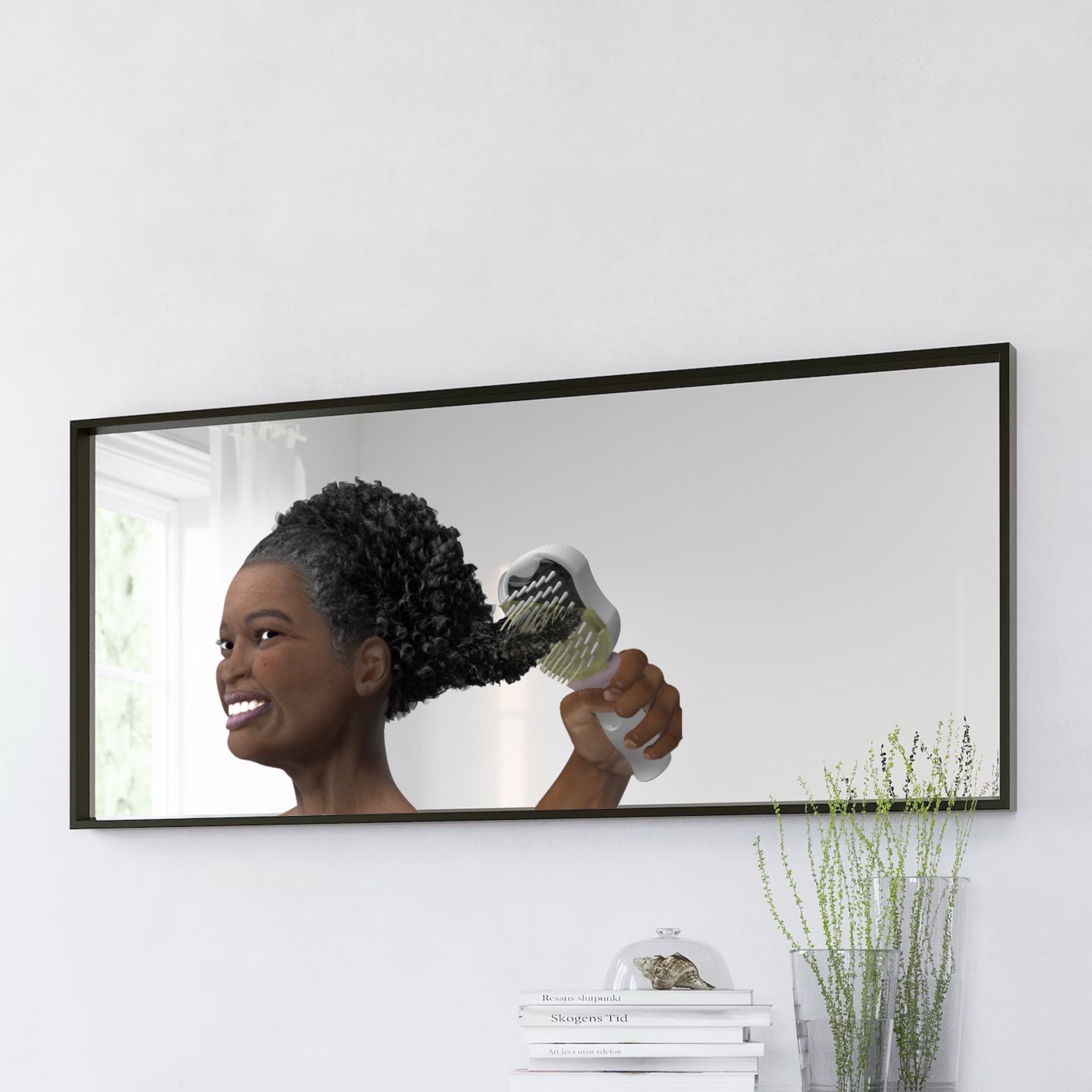





Product Development Process
Understand the problem.
As a Black woman, hair breakage is a problem I have experienced first-hand, thoroughly (believe me). However, experiencing a problem as an individual is not reflective of the experiences of the entire demographic. Therefore, as to minimise bias from the beginning a problem investigation phase took place. Hair breakage begins with the science, so I investigated why this was a problem in the first place.
Hair structure
-
The hair cortex, crucial for shaft strength, prevents layers from separating during stretching or combing. Repetitive combing damages the cortex by breaking bonds in the cell membrane complex. L'Oréal's study, prompted by high breakage reports in African American women, found that the break stress of hair strands decreases, making them vulnerable to breaking or splitting under minimal forces.
-
The cuticle layers primarily function as a protective barrier for the internal structures of a hair shaft, mainly composed of keratin. In a healthy hair fiber, these layers lie flat, creating a smooth surface with minimal friction during combing. Damage causes the cuticle edges to distort, creating a rough surface that obstructs the comb's path, leading to increaseCuticd friction and further breakage
Hair science
Water composition of hair
-
Hair strength is influenced by moisture, not just the condition of the protective layer. Two main sources of moisture are from the environment and applied products. Hair absorbs moisture when it's humid, making it more elastic. Afro hair types have less water content, making them more prone to damage from combing.
-
An everyday consumer often think their hair needs moisture when they're actually feeling the smoothness of the outer layer, not necessarily the water content. To strengthen hair, water needs to penetrate the shaft, but this can create weak points. Afro hair loses moisture quickly, so using creams can help slow down water loss.
Hair’s elastic properties
-
When hair is stretched or combed, the Cell Membrane Complex (CMC) prevents layers from separating, boosting overall shaft strength. Repetitive combing, however, damages the cortex over time by breaking bonds in the CMC.
-
L'Oréal conducted a study after reports of 96% of African American women facing breakage. They found that multiple broken bonds in the cortex reduce the overall hair strand's break stress, making it susceptible to breaking or splitting from minimal forces.
User survey statistics
To gain insights from the target demographic, a questionnaire was conducted, examining current hair maintenance practices and addressing user pain points. The survey focused on three key areas:
What do consumers identify as the most damaging haircare practice?
What do consumers identify as the most beneficial practices?
What percentage of consumers recognise the benefit of the original concept?
The study had 125 respondents of African/Caribbean descent (hair type 3c to 4c), aimed at gathering diverse perspectives. Results indicated a prevalent need for solutions that improve hair health without disrupting established routines.
40%
of participants stated unprompted that combing was the most difficult aspect of their hair routine
67%
of participants stated they had no idea dry combing was a damaging practice for their hair type
82%
of participants stated that this concept was something they would be interested in adding to their hair routine.
Product Ideation.
The product ideation stage served as a development stage for the original concept of a ‘cream dispensing comb’. Multiple aspects were explored in relation to intelligent features and additional capabilities, that were grouped by consumer needs that arose in the questionnaire phase.
(Hair health tracking, Communications, Intelligence)

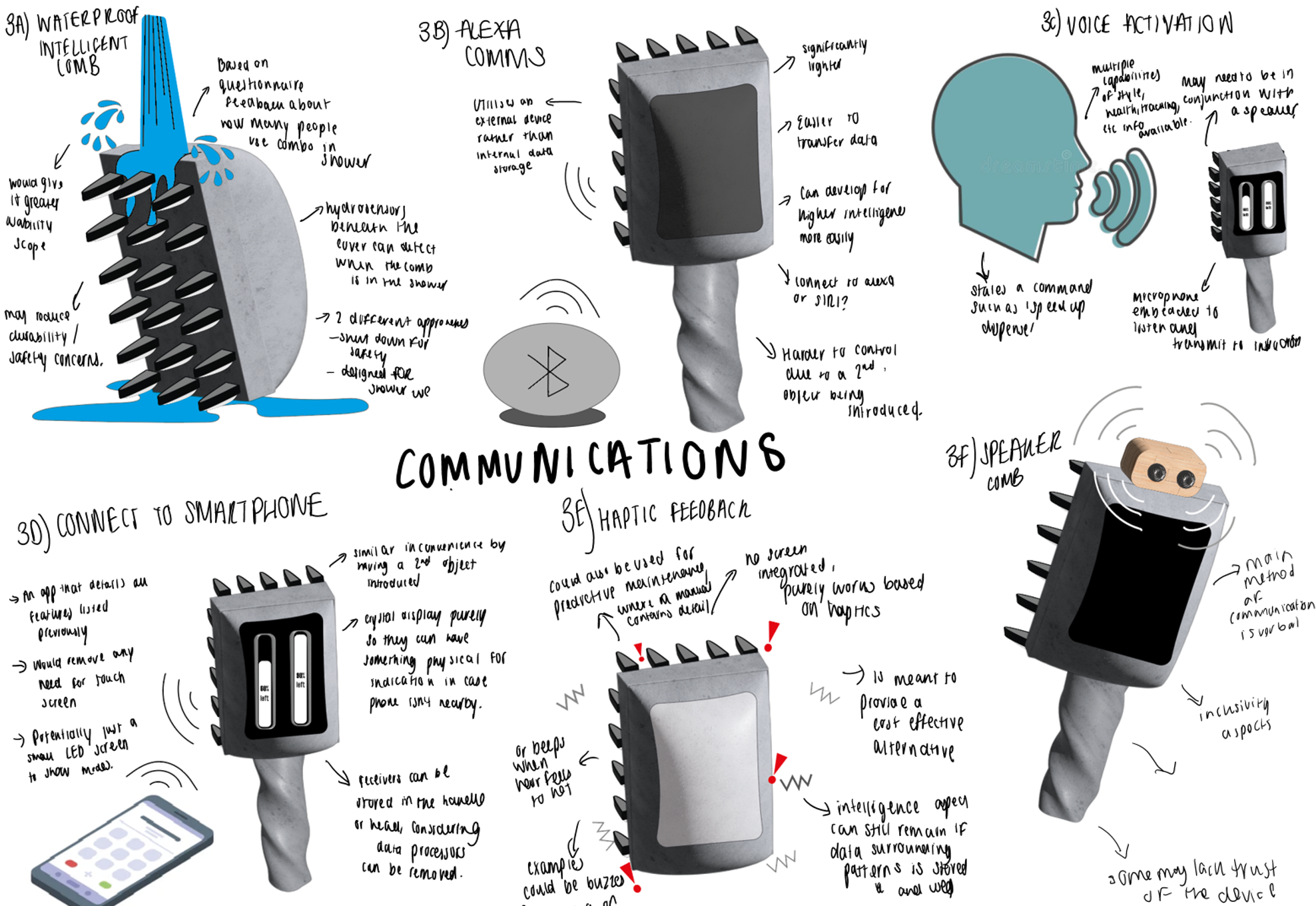
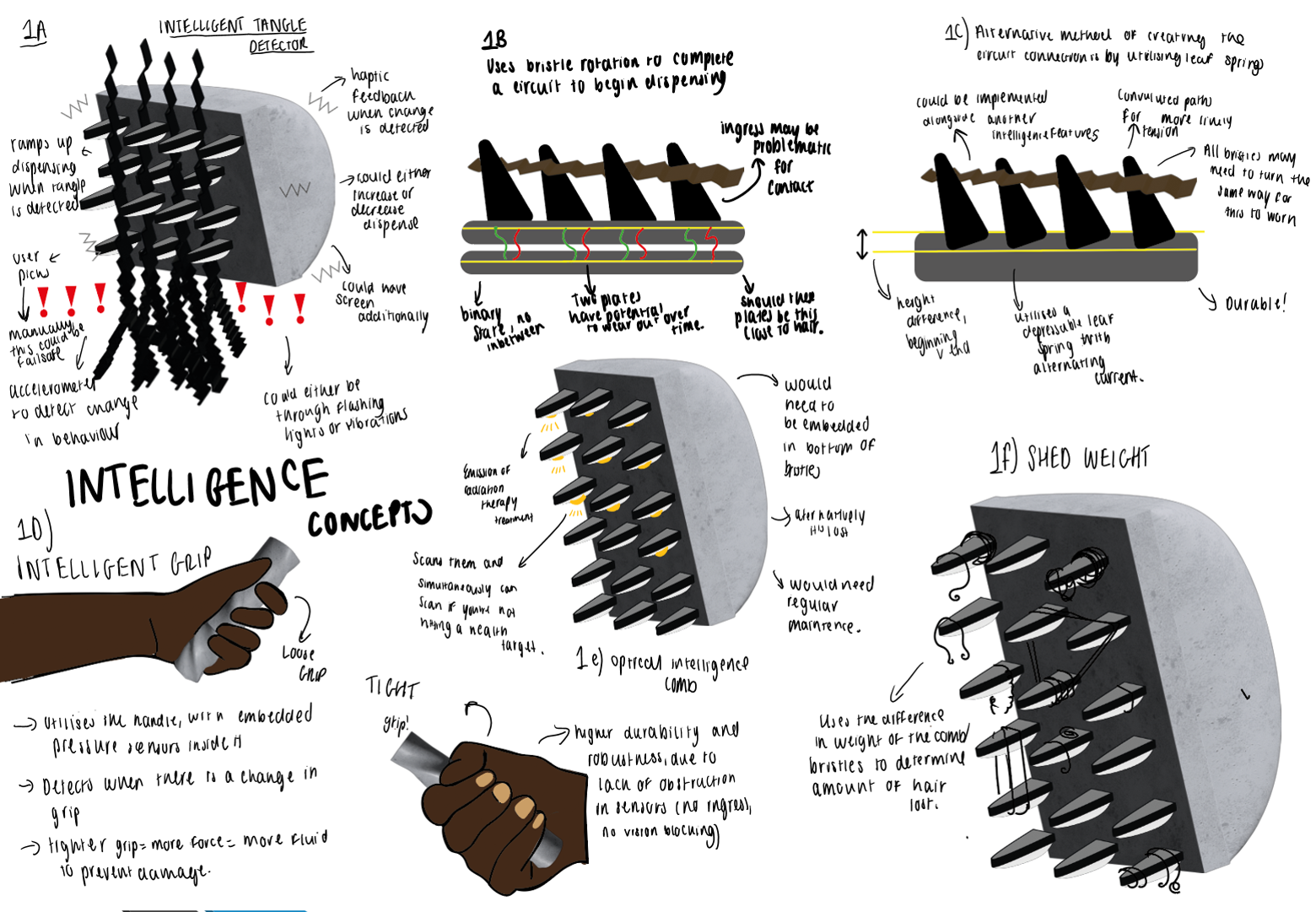
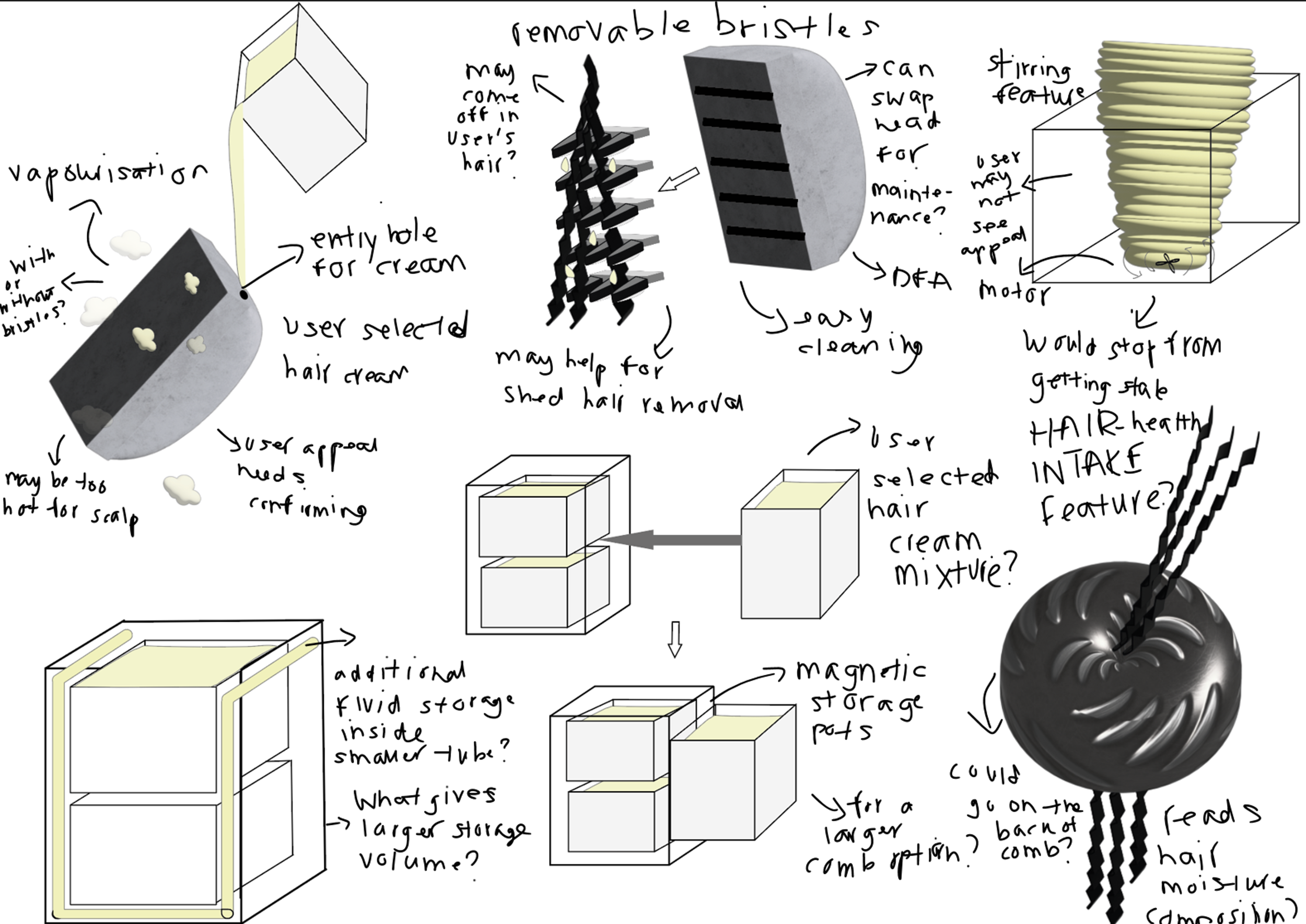
Design Development.
The concepts were put through a Pugh Matrix with requirements set from the consumer needs questionnaire. Developed designed were ideated then selected through obtaining feedback from a smaller group of the initial questionnaire respondents. A communication, tracking focused product met the highest number of design criteria, and allowed us to move forward.
